Tech
New dozers loaded with technology
Published
2 years agoon
By
admin
Dozers don’t spring to mind as the machines most likely to sport the latest technology, but recent models are bristling with advanced features.
Several manufacturers say their latest dozers are the best ever, touting such technology as operator-assist features, factory-integrated machine control and even remote-control operation.
But before we get into the new tech and take a look at the latest models on the market, we’ll start with some fundamentals to help you spec your next dozer.
Spec’ing the right dozer
Jeremy Dulak, product manager, dozers, Case Construction Equipment, says choosing the right dozer still means matching the machine to the fundamentals of the customer’s work.
“What type of work do you do?
“How large is your typical jobsite?
“What other equipment do you have and how will this dozer’s performance be best matched to those other machines?
“What’s the balance between fine grading and cutting?”
The most advanced dozer is the wrong dozer if it doesn’t match the customer’s work profile.
Derek Furr, product application specialist, Cat, emphasizes the importance of matching your dozer to your staff.
“Honestly assess the proficiency of your operators so that you can accurately assess the value of assist features.” He says Cat offers dozers from basic canopy models to fully configured machines, so getting the right set of operator-assist features is straightforward once a baseline of operator skill is established.
What about blades?
There are many styles of blades to match the many types of dozing applications. Some manufacturers leave blade choice to the customer as part of the spec’ing process. Others got with a standard blade, and customers wanting something else have to make a special order.
Matt Goedert, Deere solutions marketing manager for dozers and motor graders, says the company’s 750K, 850K and 950K have two main blade configurations with multiple sizes: a six-way PAT (power angle tilt), which is the more versatile of the two, and OSD (outside dozer) with push beams that transfer the load to the rear of the tracks and is good for heavy dozing and point loads, such as stump removal.
“In the OSD configuration, a semi-U blade is the most common,” says Goedert, “and provides both good finish grading and good carrying capacity.”
A full-U blade carries more but provides lower penetration and cutting force in hard materials and is most commonly used for working with processed materials. A PAT configuration adds versatility, with the ability to angle the blade to manage material and complete fine grading tasks, while still having the capacity for heavy dozing.
He says that because the undercarriage is such a large part of initial and ongoing costs, Deere offers three choices to match customer needs. The standard sealed and lubricated design is suitable for general dozing. The extended-life undercarriage uses bushings with an additional coating of harder wear material. The Maximum Life undercarriage uses coated bushings as well as heavier sprockets, rollers and idlers for the most demanding conditions. “The goal is to have balanced wear so that the dozer is taken out of service once for undercarriage service when all the components exhibit comparable wear, so customers get maximum life out of all the components.”
All hydrostatic-drive models from Komatsu, the D37 through the D71, come standard with six-way PAT blades, because they “provide the most versatility and control,” says Rafal Bukowski, Komatsu product specialist, HST dozers.
The Komatsu D65, a torque-converter model, has a sigma or semi-U blade, with a PAT blade on the waste model.
Don’t overlook the small dozer
The availability of advanced technology, such as Komatsu’s iMC 2.0, makes smaller models more capable.
“It’s a common misconception that bigger is always better,” says Bukowski. “But smaller models are more competent than in the past and are perfectly suitable for a large part of traditional dozing applications while providing lower operating costs and easier transportability than with larger machines.”
He points out that “smaller” doesn’t mean “small.” The D37 and D39, Komatsu’s smallest models, have operating weights up to 22,817 pounds and blade capacities up to 3.14 cubic yards.
Case: Machine control and the Minotaur
 Case Construction Equipment offers factory-fit machine control on its 750M through 2050M dozers. The option includes factory-installed and calibrated 2D, dual-mast 3D and SiteControl CoPilot features from Leica Geosystems. The factory-fit approach simplifies initial investment by grouping the selected Leica system with the dozer into a single transaction. It also enhances residual value by offering the assurance of a factory-integrated system, Case says.Case Construction EquipmentCase now offers factory-fitted machine control on the 750M through 2050M models. The machines arrive at dealers calibrated and ready to work. As a factory option, this simplifies purchase and compiles all the elements of the initial investment into a single payment and financing package.
Case Construction Equipment offers factory-fit machine control on its 750M through 2050M dozers. The option includes factory-installed and calibrated 2D, dual-mast 3D and SiteControl CoPilot features from Leica Geosystems. The factory-fit approach simplifies initial investment by grouping the selected Leica system with the dozer into a single transaction. It also enhances residual value by offering the assurance of a factory-integrated system, Case says.Case Construction EquipmentCase now offers factory-fitted machine control on the 750M through 2050M models. The machines arrive at dealers calibrated and ready to work. As a factory option, this simplifies purchase and compiles all the elements of the initial investment into a single payment and financing package.
As compact track loaders became larger and more powerful, there was concern they were stealing market share from small dozers. OEMs agree that if customers need a machine for dozer applications, a dozer is still the right choice. But for customers who want more versatility, a CTL with a dozer blade makes sense.
Case built the Minotaur DL550 with these customers in mind, says Jeff Jacobsmeyer, product manager for the DL550. While the DL550 looks like a CTL, it has a fully integrated C-frame like a dozer.
“The DL550 is a single platform that can perform multiple tasks and do them all well,” says Jacobsmeyer.
The 114-horsepower DL550 uses the same blade as Case’s 650M dozer; optional equipment includes a drawbar and a five-position ripper with three shanks. The vertical-lift machine has seven bucket and three track options. “If you plan on using a good mix of dozer mode, loader mode and attachments, the DL550 Minotaur is a great option.”
Cat Next Gen improvements
 Cat has three models in its small dozer line: the D1, D2 and D3 (above). All have hydrostatic drive and Cat C3.6 engines with net power of 80, 92 and 104 horsepower, respectively. Operating weights are 17,855, 18,382 and 20,640 pounds with dozer blade, enclosed ROPS cab, operator and fluids. A three-shank, parallelogram ripper is available for all three. Each gets Next Gen updates.CaterpillarNext Generation models of Cat dozers came out in August 2020. In August 2022, a number of significant improvements was made that could be broadly grouped into two types: operator assist and Cat Command remote control.
Cat has three models in its small dozer line: the D1, D2 and D3 (above). All have hydrostatic drive and Cat C3.6 engines with net power of 80, 92 and 104 horsepower, respectively. Operating weights are 17,855, 18,382 and 20,640 pounds with dozer blade, enclosed ROPS cab, operator and fluids. A three-shank, parallelogram ripper is available for all three. Each gets Next Gen updates.CaterpillarNext Generation models of Cat dozers came out in August 2020. In August 2022, a number of significant improvements was made that could be broadly grouped into two types: operator assist and Cat Command remote control.
Operator-assist features are software-driven and include such items as enhanced Smart Blade and traction control. By damping blade motion, Stable Blade allowed operators to produce a smoother surface when the blade was down. The enhanced Stable Blade provides comparable damping control with the blade in other positions.
The ARO (attachment-ready option) includes advanced Stable Blade and preparation for the addition of Cat Grade or Cat Grade 3D. A new blade-load monitor combined with Auto Carry prevents track slip, as does low-slip traction control for low-speed operations.
Cat Command remote control comes as line-of-sight (LOS) and non-LOS. A controller provides LOS control up to about 75 feet, depending on conditions. The controller is a “belly box” configuration.
Non-LOS is a complete station that communicates via Wi-Fi to control several machines with virtually unlimited range. Control can be manual or with Cat Grade 3D. Machines ship remote-control-ready; the actual remote control is installed by the dealer.
DD100: Doosan’s first dozer
 The first Doosan DD100 is delivered in U.S.DoosanHyundai Doosan Infracore shipped its first dozer in May. Doosan dealer Best Line Equipment delivered it to a customer in Pennsylvania in August.
The first Doosan DD100 is delivered in U.S.DoosanHyundai Doosan Infracore shipped its first dozer in May. Doosan dealer Best Line Equipment delivered it to a customer in Pennsylvania in August.
The 9-metric-ton DD100 is targeted at the North American market. Production began in June 2022. Two additional machines have been shipped to the U.S. for final testing and product demonstrations.
Production on a second model, the new 13-metric-ton DD130, is expected around February 2023.
Standard features on the DD100 include an 8-inch Smart Touch display, rearview camera, LED lighting and front, rear and side wiper blades. 3D Machine Guidance and 3D Machine Control are options.
Dressta TD-15M and TD-25M Series 2 models
 The new TD-15M from Dressta has a two-speed steering drive that delivers 100% power to both tracks, allowing operators to push a full load through turns with maximum material retention. Single grouser tracks are available in seven sizes ranging from 20 to 37 inches wide. All five blade options can be equipped with hydraulic tilt and angle as well as manual blade pitch adjustment. Power is from a Tier 4 Final/Stage V-compliant Cummins B 6.7 rated at 232 gross horsepower.DresstaExtensive updates have been made to the Dressta TD-15M and TD-25M.
The new TD-15M from Dressta has a two-speed steering drive that delivers 100% power to both tracks, allowing operators to push a full load through turns with maximum material retention. Single grouser tracks are available in seven sizes ranging from 20 to 37 inches wide. All five blade options can be equipped with hydraulic tilt and angle as well as manual blade pitch adjustment. Power is from a Tier 4 Final/Stage V-compliant Cummins B 6.7 rated at 232 gross horsepower.DresstaExtensive updates have been made to the Dressta TD-15M and TD-25M.
Horsepower has been increased to 232 on the TD-15M and 375 on the TD-25M. Both are Tier 4 Final and European Stage V compliant and have Cummins engines with Dressta powershift transmissions providing six forward and six reverse speeds.
They can be spec’d with wide or long tracks, rippers with single or multiple shanks, landfill configuration and rigid or angle blades. Both models have new cabs featuring 33% more glass, left and right ergonomic joysticks, a 7-inch full color monitor and high-efficiency air suspension seating.
The mid-size TD15M is intended for customers working on roads, landscaping, forestry and landfills. The large TD25M is intended for heavy applications such as mining and quarries.
John Deere using feedback
 The John Deere 950K has a PowerTech engine rated at 265 net horsepower and hydrostatic transmission. Operating weight is up to 73,700 pounds. Track on ground is 126.5 to 135.1 inches. Standard configuration is 43 single grouser extreme service shoes and 12-foot 10-inch blade with a 31-inch dig depth and 2-foot 7-inch tilt.John DeereDeere has a highly structured program for getting input from a wide range of stakeholders and making tech and feature advances guided by that input. It gets feedback from customer advocate groups, who are brought on site for a week or two to operate and evaluate machines. A dealer advocate group functions similarly.
The John Deere 950K has a PowerTech engine rated at 265 net horsepower and hydrostatic transmission. Operating weight is up to 73,700 pounds. Track on ground is 126.5 to 135.1 inches. Standard configuration is 43 single grouser extreme service shoes and 12-foot 10-inch blade with a 31-inch dig depth and 2-foot 7-inch tilt.John DeereDeere has a highly structured program for getting input from a wide range of stakeholders and making tech and feature advances guided by that input. It gets feedback from customer advocate groups, who are brought on site for a week or two to operate and evaluate machines. A dealer advocate group functions similarly.
Deere also spends time in the field gathering insights from customers and dealers. “In some cases a customer or customer group has been involved in the development of a feature from concept to production,” says Goedert.
Part of the development process is to ask hard questions, says Goedert. “Does the feature provide value? Does it require operator education? Will it be apparent? That is, will the operator even be aware the feature is available for use?”
He says this process was key in developing Slope Control, an entry-level integrated grade control, as well as SmartGrade, the fully integrated 3D grade control system.
Komatsu iMC 2.0 is here
 The D71PXi-24 from Komatsu has 240 horsepower and hydrostatic drive and benefits from iMC 2.0 features. With quick surface creation, operators can create a temporary design surface with the push of a button. Tilt steering control continuously and automatically tilts the blade to maintain straight travel. The two roof-mounted antennas receive signals from GPS, GLONASS, Galileo, BeiDou and QZSS to maintain blade accuracy even on slopes and under shadows from obstructions.KomatsuIntroduced in 2013, Komatsu’s intelligent machine control technology, or iMC, brought a number of advanced features to market. Since 2019, iMC 2.0 has delivered even more features and value, the company says. All hydrostatic models except the smallest (D37) are available as “i” models.
The D71PXi-24 from Komatsu has 240 horsepower and hydrostatic drive and benefits from iMC 2.0 features. With quick surface creation, operators can create a temporary design surface with the push of a button. Tilt steering control continuously and automatically tilts the blade to maintain straight travel. The two roof-mounted antennas receive signals from GPS, GLONASS, Galileo, BeiDou and QZSS to maintain blade accuracy even on slopes and under shadows from obstructions.KomatsuIntroduced in 2013, Komatsu’s intelligent machine control technology, or iMC, brought a number of advanced features to market. Since 2019, iMC 2.0 has delivered even more features and value, the company says. All hydrostatic models except the smallest (D37) are available as “i” models.
Proactive dozing control is one feature of iMC 2.0. The machine learns as it works, collecting data from each pass to predict the most effective and efficient subsequent passes. This track mapping approach can deliver up to 60% greater productivity.
Another feature, track lift layer control, is used for maintaining consistency while spreading fill, which Komatsu claims can double production.
Komatsu’s new D71 has 47% better visibility ahead of the blade, 9% greater engine power and 13% more blade capacity than the D65.
The D71i-24 comes with all iMC 2.0 features including proactive dozing, lift layer control and tilt steering control.
Liebherr Generation 8 for greater grading
 Liebherr’s PR 716 dozer has an operating weight of up to 34,830 pounds and a blade capacity of up to 4.07 cubic yards. The engine is rated at 125 horsepower (SAE J1349), and the hydrostatic drive is electronically controlled. Eco mode, auto idle and auto shutdown improve fuel efficiency and lower operating costs. The isolated cab, air suspension seat and touchscreen monitor provide operator comfort.LiebherrGeneration 8 dozers from Liebherr include models from the PR716 to the PR766. Integrated operator assistance systems are available in three levels. Free Grade provides blade stabilization during fine grading. Definition Grade provides automatic blade positioning on 2D grades. Topcon 3D MC Max is an optional GPS/GNSS machine control system.
Liebherr’s PR 716 dozer has an operating weight of up to 34,830 pounds and a blade capacity of up to 4.07 cubic yards. The engine is rated at 125 horsepower (SAE J1349), and the hydrostatic drive is electronically controlled. Eco mode, auto idle and auto shutdown improve fuel efficiency and lower operating costs. The isolated cab, air suspension seat and touchscreen monitor provide operator comfort.LiebherrGeneration 8 dozers from Liebherr include models from the PR716 to the PR766. Integrated operator assistance systems are available in three levels. Free Grade provides blade stabilization during fine grading. Definition Grade provides automatic blade positioning on 2D grades. Topcon 3D MC Max is an optional GPS/GNSS machine control system.
Liebherr Active Sensor Control is standard and provides blade stabilization in all axes. Two independent integrated circuits use gyroscopic and inertial moment sensors for higher grading speeds and precise fine grading. Kits are available to expedite installation of 2D and 3D machine control systems from Trimble (Earthworks) and Leica.
Generation 8 dozers also features improvements for the operator. The cab is fully isolated from the machine base for dramatically lower noise and vibration. Climate control is standard. Access and descent lighting with delay provide greater safety in low light conditions. A 9-inch display is standard.
What about delivery times?
Sources agree that supply-chain issues continue to confound product availability.
Issues can be unpredictable, and there’s no definite end in sight.
All agree that customers’ best option is to work closely with dealers and develop a proactive plan for fleet management.
You may like
-
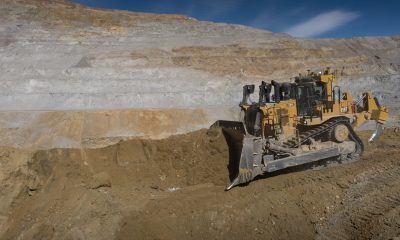

New Cat D10 Dozer offers more power for less fuel
-
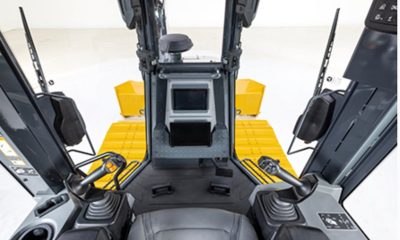

John Deere introduces P-Tier line of small dozers
-
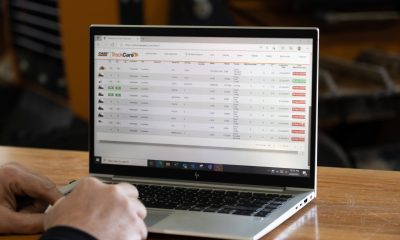

Small Case CE dozers get big upgrades
-
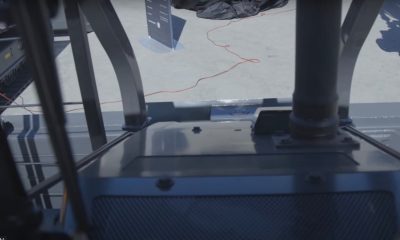

Develon reveals second dozer, the mid-size DD130
-


Video: John Deere unveils hybrid-electric 850 X-Tier dozer
-
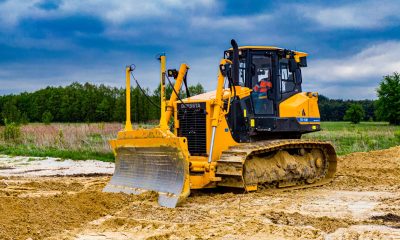

Dressta brings new TD-15M, TD-25M dozers to North America
Tech
Cat’s Next Generation 255 and 265 Get More Power, Lift Height
Published
7 months agoon
October 10, 2023By
admin
Caterpillar is bidding farewell to its 259D3, 279D3 and 289D3 compact track loaders with the introduction of its new, next-generation 255 and 266 models.
The completely redesigned models debuted at media and customer events at Caterpillar’s Edwards, Illinois, Demonstration and Learning Center last week. The 255 and 265 offer improved engine performance, more lift height, a roomier cab and more standard technology than their predecessors.
“We kept the DNA of the D3 series while reimagining the possibilities of loader performance using voice of customer feedback to lead the way,” says Trevor Chase, product application specialist for Caterpillar. “Both next-generation models leverage the many benefits offered by the vertical lift design. The new Cat 255 replaces the 259D3, while the 265 replaces both the 279D3 and 289D3 machines.”
The CTLs are the last of Cat’s building and construction products to get the next-generation treatment and simplified nomenclature. The first number (2) represents the skid steer loader and compact track loader machine family; the middle number (5 or 6) designates the machine size; and the ending number (5) is the compact track loader identifier. Skid steers will be identified by a 0 end number. Additional new models will roll out in the coming months, the company says.
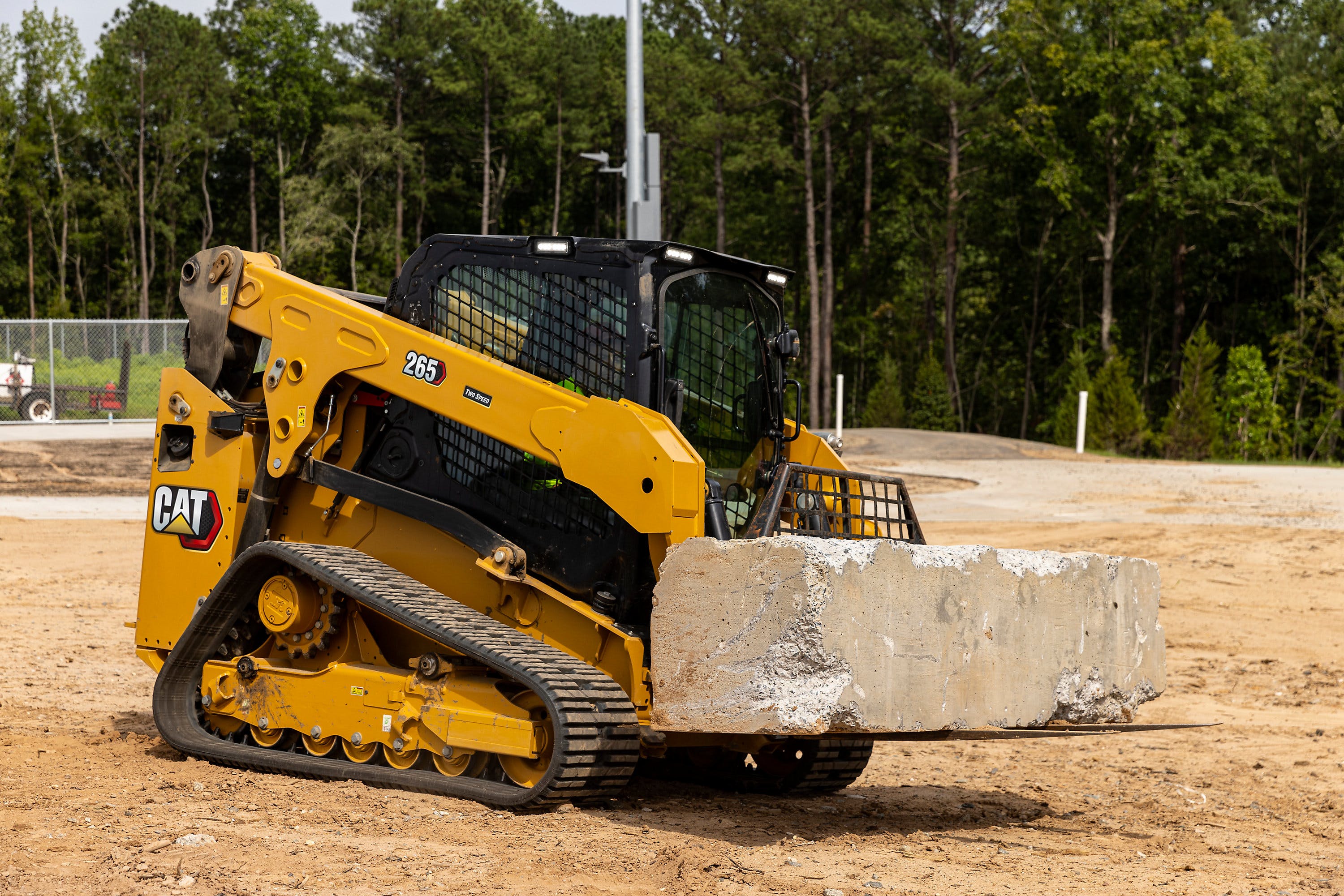 CaterpillarMore power and torque
CaterpillarMore power and torque
Cat equipped the 255 with a C2.8T engine and the 265 with a C2.8TA engine, both at 74 horsepower. This gives the new machines a significant boost in torque – 13% for the 255 and 43% for the 256 – over their D3-Series predecessors. The engine and cooling package are mounted lower in the frame for added visibility out the rear window and stability while lifting heavy loads.
Customers attest that the added lift height makes truck loading easier. The 255 offers 10 feet 4 inches of lift height, while the 265 can reach 11 feet high.
“The lift height has made a big difference when loading trucks,” said Derrick Roger, owner of Coast to Coast Lawnscapes, who spent several months testing the 255. “You can get on top of that truck now and empty the bucket; whereas, before you would have to shake the bucket to try to get the material to fall out.”
The 255 delivers 36% more tilt breakout, 26% higher lift breakout force and a 24% increase in rated operating capacity (ROC). The 265 also delivers 19% higher tilt breakout force and 22% higher lift breakout force.
Standard hydraulic pressure has been increased to 3,500 psi, allowing the 255 and 265 to operate all Cat Smart Attachments with the standard auxiliary hydraulics provided.
If demanding attachments require additional hydraulic flow, customers can have their Cat dealer activate the high flow functionality on the machine or remotely via software update. This makes it possible for the CTLs to hit 30 gallons per minute of flow at the standard system pressure.
A High Flow XPS factory option increases auxiliary hydraulic system pressure to 4,061 psi for both models, while also increasing the hydraulic flow to 30 gallons per minute for the 255 and 34 gallons per minute for the 265.
The torsion suspension undercarriage delivers better operator comfort, track wear and material retention, plus the stiffer design results in smoother graded surfaces, Cat says. A new 12.6-inch bar-tread narrow track option is available on the 255.
A more spacious cab
Cat says it has increased the cab width by 2.75 inches without making the machines wider and the footwell-to-ceiling height by 1.8 inches. The larger cab gives operators an additional 1.5 inches of hip room and 1.1 inches more width between the joysticks.
A range of new mechanical and air-ride suspension seat options are available, including a ventilated and heated seat. A new automatic temperature control allows operators to set a specific temperature. Relocated vents help cool or heat the machine quickly.
The standard package includes the same 5-inch LCD monitor as the D3 Series CTLs, which offers Bluetooth connectivity and functionality for the rearview camera feed, creep, job clock, and maintenance reminders.
Customers can upgrade to a new 8-inch advanced touchscreen monitor, like the display found in Cat’s next-generation mini excavators and small loaders. It delivers advanced radio control and supports the 270-degree multicamera option. The advanced monitor pairs with the advanced joysticks for integrated control of all machine functions and adjustments.
“You can adjust the movement – or the aggressiveness or the conservativeness – of how your tracks and lift arms work through your advanced touchscreen display,” Dante Thomas, skid steer and CTL marketing manager, said. “And you can control of all of your display functions from the advanced joysticks. There are buttons with enter and select functions on those joysticks that you’re able to change any functionality that is possible.”
Cat also redesigned the entry, making the 255 and 265 easier to enter and exit. The cab door can be opened even when the lift arms are not fully lowered to the frame stops. It can be removed without tools in less than one minute.
Advanced technologies
Calling the 255 and 265 “one of the most attachment-friendly machines on the market,” Thomas says both the standard and advanced monitors can run Cat Smart Attachments, such as the dozer and grader blades and backhoe.
“It has attachment recognition that when you plug the attachment into the machine, it recognizes which attachment is connected. It adjusts your joystick pattern, so it gives you intuitive and simple control,” says Thomas.
The available Cat Product Link Elite system tracks machine hours, location, asset utilization, provides fault code details and delivers advanced monitoring and machine health, that is remotely accessible via VisionLink. In addition, Product Link Elite provides remote flash and troubleshooting capabilities and quickly enables the remote activation of the SEA High Flow feature.
[embedded content]
Tech
Quick Data: 2023 Top-Selling Wheel Loaders and Auction Trends
Published
7 months agoon
October 9, 2023By
admin
Quick Data is a snapshot of new and used wheel loader sales trends from Randall Reilly’s EDA equipment financing data, TopBid auction price service and EquipmentWatch market trend reports.
Demand for wheel loaders has softened with new and used financed wheel loader sales down year-over-year from August 1, 2022 to July 31, 2023 according to Randall Reilly’s EDA equipment financing data.
Financed new wheel loader sales dropped 10%, while used financed wheel loader sales fell by 15% compared to the same period last year.
Cat (22.4%), Deere (21.0%) and Komatsu (12.4%) held their positions year-over-year as the top three sellers of new financed wheel loaders. Top models sold included the Deere 544 P-Tier (401), Deere 624 P-Tier (380) and the Komatsu WA270-8 (364).
[Watch: “A Really Solid Machine” – Test Run of Komatsu’s WA475-10 Wheel Loader]
Cat (28.5%) and Deere (22.9%) also snagged the No. 1 and 2 positions for the highest number of financed used units sold, with Case (14.7%) claiming the third spot. On the date we examined the data, the top-selling models were the Case 321F (340), Cat 926M (164) and the Case 621G (159).
During this period, there were more buyers of new loaders in Florida (955) than in any other state. Buyers of new wheel loaders were also prevalent in Texas (893) and Illinois (665). Those states were also top buyers of used financed machines, with 712 units sold in Texas, 413 in Florida, and 412 in Illinois.
EDA data is compiled from state UCC-1 filings on financed construction equipment. EDA continually updates this data as information comes in from each state.
[Related Content: A Rundown of the Latest Wheel Loaders for 2023]
Used Wheel Loader Market
Used wheel loader prices rose 10.1% for the 12-month period from August 1, 2022 to July 31, 2023, according to Randall Reilly’s EquipmentWatch market trend data.
The average price for a used wheel loader was $137,465 in July 2022 compared to $151,367 in July 2023. The average age of used wheel loaders fell slightly during the period, dropping from 8.8 years to 8.3 years.
 EquipmentWatchThe average age and price were calculated on 153,356 resale listings during the period in the EquipmentWatch database.
EquipmentWatchThe average age and price were calculated on 153,356 resale listings during the period in the EquipmentWatch database.
Over the last 12 months, prices for used wheel loaders have in general increased, with the largest gains in October 2022 (6.5%) and February 2023 (2.9%).
EquipmentWatch defines fair market value (FMV) as the monetary value of an asset that can be expected in a transaction with a single seller and single buyer, neither of whom is under any compulsion or time restriction to complete the transaction. FMV for heavy equipment is most closely associated with the private resale market, as opposed to the public auction market.
Wheel Loader Auction Prices
Caterpillar also dominated the auction charts, accounting for 18 of the top 20 wheel loaders sold in terms of price for the 12-month period of September 1, 2022 to August 31, 2023. Deere and Komatsu were the only other manufacturers to appear on the list.
The top auction price spot went to a 2021 Cat 966M with 2,188 hours. It sold for $400,000 at a Ritchie Bros. auction in Orlando, Fla., on September 21, 2022. The second-highest price paid was $315,000 for a 2019 Cat 980M with 7,836 hours at another Ritchie Bros. sale in Atlanta, on December 1, 2022. Rounding out the top three was a 2018 Deere 944K with 8,941 hours. It sold for $290,00 at a J.M. Wood Auction Co. sale in Montgomery, Ala., on March 21, 2023.
In total, there were 358 wheel loaders sold at auctions tracked by Top Bid during this time, with an average price of $99,747. (This does not include any units sold for less than $5,000.)
EDA, Top Bid and EquipmentWatch are owned by Randall Reilly, parent of Equipment World.
[Related Content: Heavy Equipment Auctions Set for Second Half of 2023]
Tech
Video: A closer look at Rokbak articulated dump trucks
Published
8 months agoon
October 6, 2023By
admin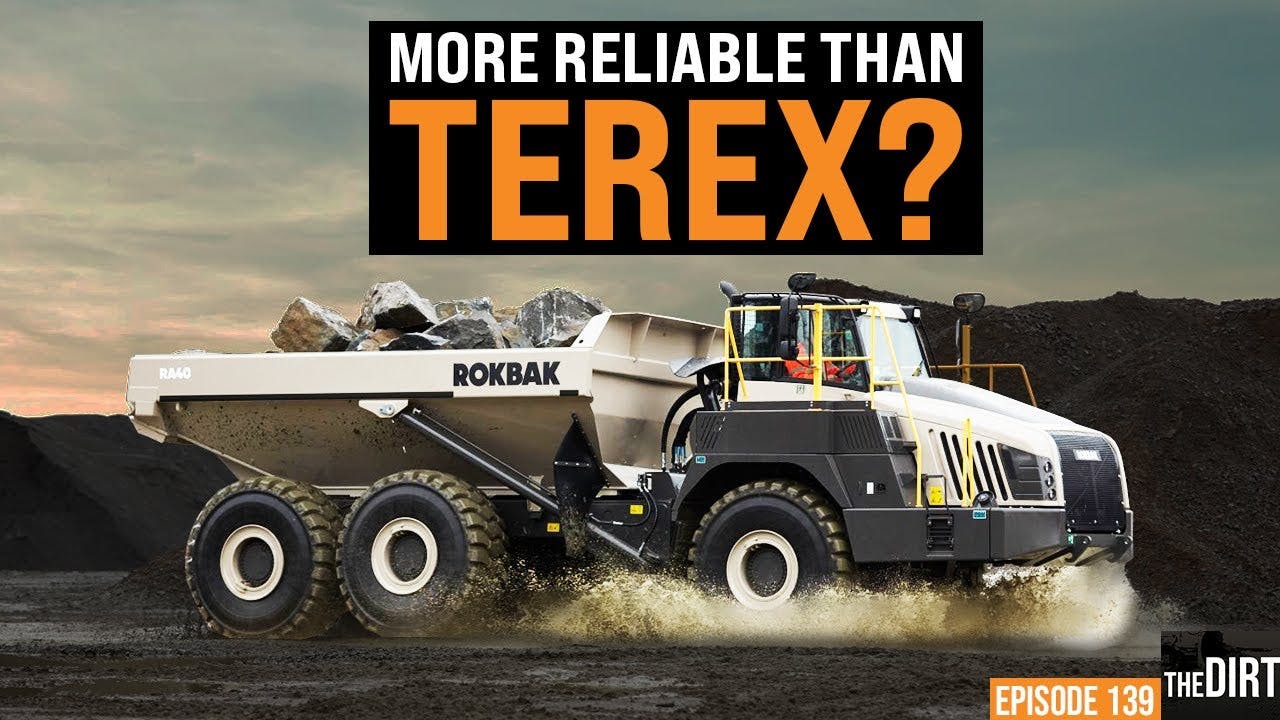

Volvo Construction Equipment bought Terex’s off-road truck line in 2014, and six years later, it rebranded its articulated haulers under the Rokbak name.
On this episode of The Dirt, we hear from Paul Douglas, Volvo vice president of rigid haulers, who explains the differences between the old Terex line and the Rokbak trucks. He also gives a hint at some of the new things coming from Rokbak, including redesigned cabs and replacing the current trucks with new models. There’s also the possibility of a new size truck to hit the market.
Rokbak, as with other construction equipment brands, is working toward a zero-emissions future. On this episode, he explains where the articulated dump truck market is heading in terms of alternative fuel. He adds that customers will see big changes in emissions and engines in the next five years, with the ultimate goal of reaching zero emissions within 10 years.
So to learn more about Rokbak and what the brand has in store for the future, check out this episode of The Dirt.
Equipment World serves up weekly videos on the latest in construction equipment, work trucks and pickup trucks – everything contractors need to get their work done. Subscribe and visit us at equipmentworld.com!
In This Episode:
Trending
-
Jobs2 years ago
Project Manager – Oxford
-
Jobs3 years ago
Commissioning Engineer Security Industry
-
Jobs2 years ago
Airport Retail Sales Assistants
-

 Business5 years ago
Business5 years agoHow To Renovate a Victorian House
-

 Business3 years ago
Business3 years agoHow to Get a Gold Supervisory CSCS Card
-
Jobs2 years ago
PASMA labourer in Cirencester
-

 Tech3 years ago
Tech3 years agoIt Won’t Make You the $6 Million Man, But Hilti’s EXO-10 May Save Your Arms, Back
-
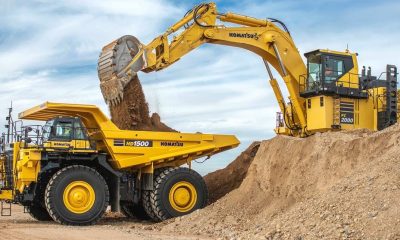
 Tech2 years ago
Tech2 years agoKomatsu launches new HD1500-8E0 rigid-frame dump truck


